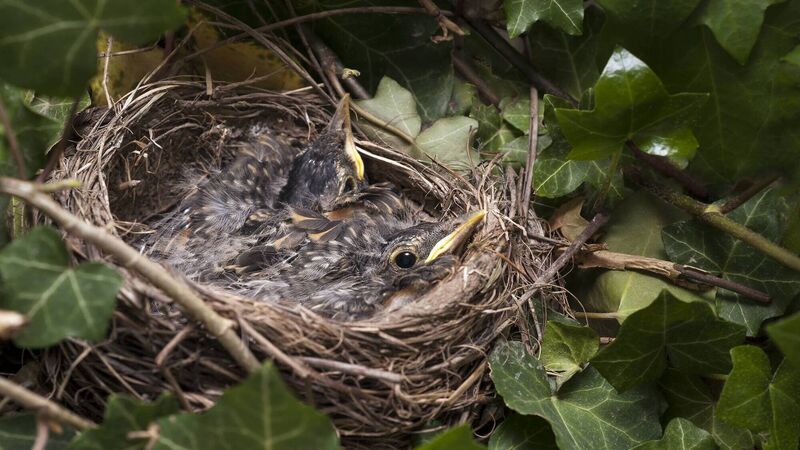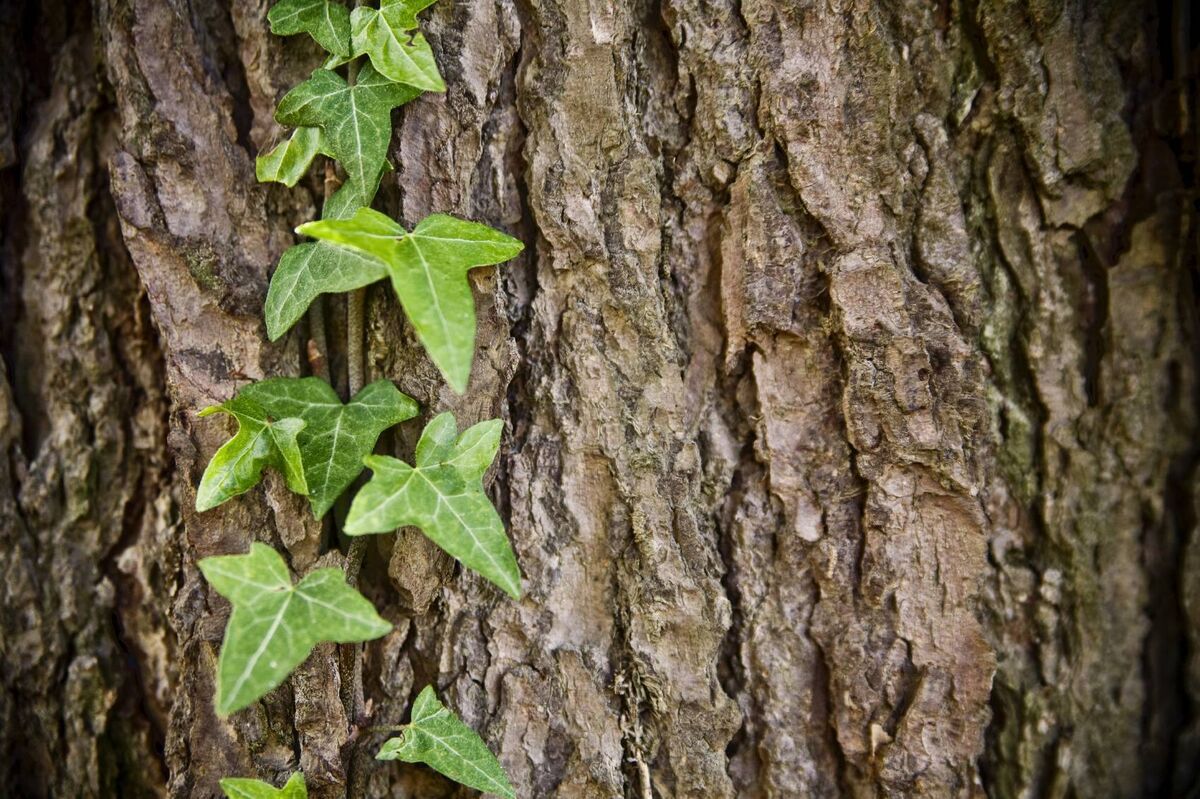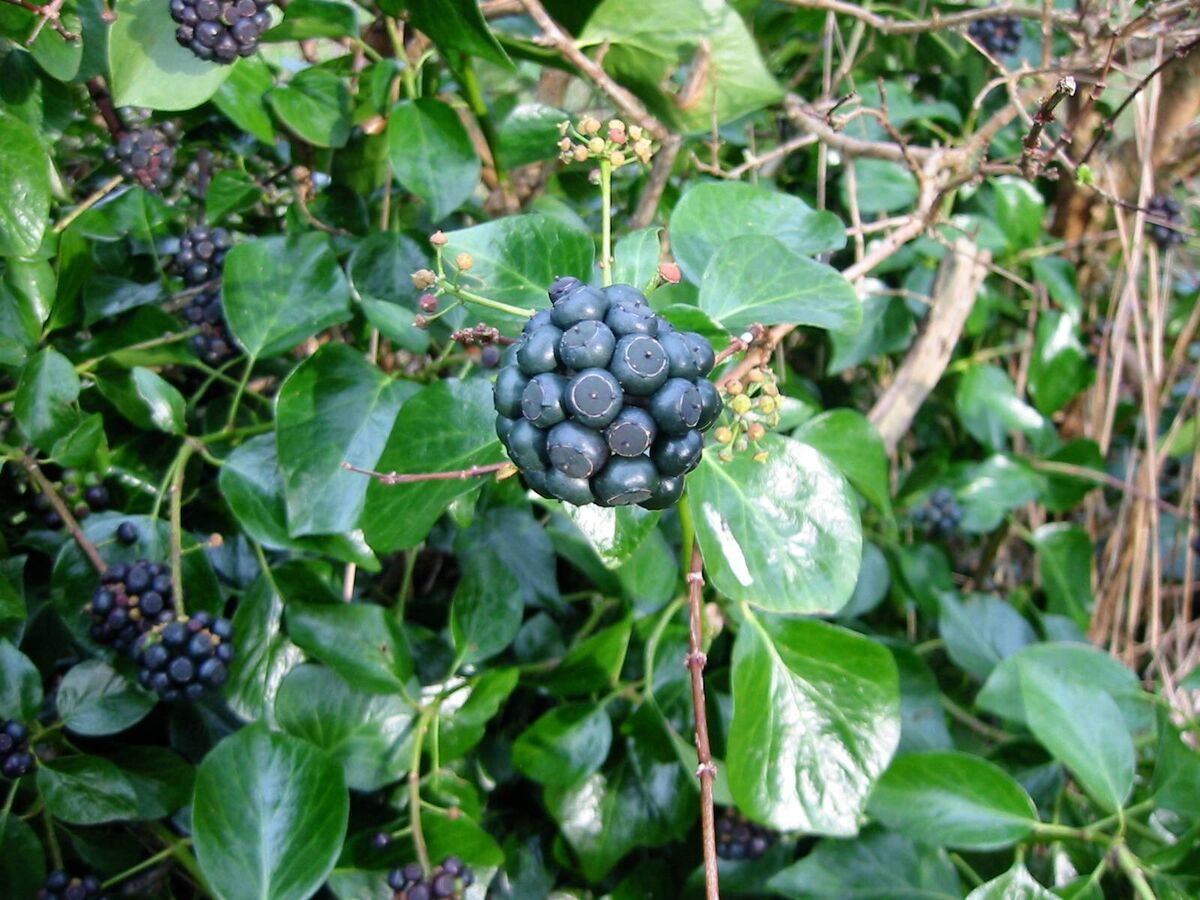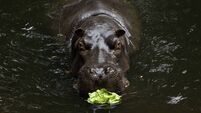Ivy offers real-estate for birds and bats and a free canteen for pollinators

A pair of baby Robins in their nest in a thicket of ivy
At this time of year there is not a lot of shelter for songbirds, who need to keep themselves out of the cold, the rain, and the frost if they are to survive the winter. Most native trees and shrubs have lost their leaves by now, leaving birds with scant protection for from the elements. One generous native evergreen that provides safe haven for songbirds right throughout the year is Ivy. Its shiny green leaves are like little tarpaulins for our feathered friends.
Ivy clambers up through tree trunks and around telephone poles, covers old walls and embankments, and weaves its way through hedges and woodlands too. This is a plant that has evolved especially for climbing. Its woody stems sprout small fibrous roots all along their length which send out tiny root hairs that can grip onto vertical surfaces. The root hairs also secrete minuscule gluey particles, suspended in a liquid polymer matrix that is a strong organic adhesive. When the particles in this adhesive combine with calcium ions, the concoction solidifies even further. This is how ivy makes its way so confidently up walls and trees, where its tangle of leafy growth is a shelter for bats, birds, and hibernating insects too.

Ivy is widely perceived here as being parasitic — a misconception which perhaps comes more from peoples’ preference for tidiness over the presence of a self-determining wild plant climbing up over everything. Parasitism is when one organism is dependent on a host which it harms but does not directly kill; commensalism, on the other hand, is the term for when one species lives in or on another which it neither helps nor harms. The little roots on ivy don’t penetrate the tree bark to which they attach themselves, nor do they take any sustenance from the tree.
When a tree is already weakened or dying, ivy can inadvertently speed up its demise. If the woody structure of a tree limb or even a whole tree is compromised by disease, a heavy load of Ivy can act like a sail and bring the limb down in a storm.
When ivy grows on walls, a thin covering is not damaging, but when a big thicket of Ivy adds too much weight at height, it can pull the wall down in time. A three-year study by Oxford University and an organisation called English Heritage investigated the impact of Ivy on old walls and heritage buildings. The research concluded that Ivy protects walls from heat, cold, salt, frost, and pollution, so is often more helpful than harmful to heritage structures.
In terms of wildlife value, Ivy has excellent credentials.

Ivy flowers are gorgeous little globes with yellow pollen-bearing anthers and glistening drops of nectar. They blossom from September through October and waft out their rich sweet honey scent on autumn days, announcing widely that they have nectar on offer. For bumblebees, honeybees, butterflies and moths, whose diet consists mainly of nectar, ivy flowers provide crucial nourishment in autumn when little else is in flower.
One type of bee, a mining bee, times its entire life cycle around the flowering of Ivy. The Ivy bee, Colletes hederae, is a solitary bee that feeds mainly on the nectar of ivy flowers so is active from early September to early November when this plant is in bloom.
The Ivy bee was not found to be present in Ireland until 2021, when an amateur wildlife photographer found one in the Raven Nature Reserve in County Wexford. Its arrival in Ireland was greeted with joy as it had been expected to arrive for several years, bringing the number of different bee species in Ireland up to 100.

Lean late winter months are especially hard for wildlife, so Ivy berries are a welcome fruit for birds. The hard clusters of dark, almost black berries develop in November and December and ripen by January and February, during the hungry gap when most wild fruits and seeds are gone, either eaten up or spoiled by repeated frosts. This makes Ivy berries an especially important food source for blackbirds, song thrushes, mistle thrushes, starlings, redwings, and more, just when they really need a nutritional boost. It has been reported that Ivy berries are as rich in calories as mars bars, gram for gram, so these birds know what they are doing when they fill up on Ivy berries.
For us, the berries are poisonous, though ivy leaves and berries have long been valued for curative applications. As far back as 300 BC, Hippocrates, the father of modern medicine, was a proponent of the many uses of Ivy. Most health food shops today supply ivy tinctures as a treatment for coughs and colds.
Hedera Helix is the scientific name for common, native Ivy. The word helix means to twist and turn around a cylinder or cone. A second native species here is called Irish ivy — Hedera Hibernica, which climbs as well as weaves its way through the lower layers of a woodland.
Across the world there are more than a dozen different types of Ivy, some native to Europe and others native to Taiwan, Japan northwestern Africa. Several varieties are available in garden centres, but it’s the two native Ivy species that have evolved alongside our native insects, bats and birds, so these are the types that benefit wildlife most. If you do have Ivy in your garden, let it flower and set fruit. Remember how generous this plant is, providing year-round real estate for birds and bats, a free canteen for pollinators in autumn, and crucial sustenance for birds at the end of winter. Return the generosity by giving it as much space as you can. If you feel you must prune ivy, do so at the end of the fruiting period, but well before birds might begin to build their nests.






